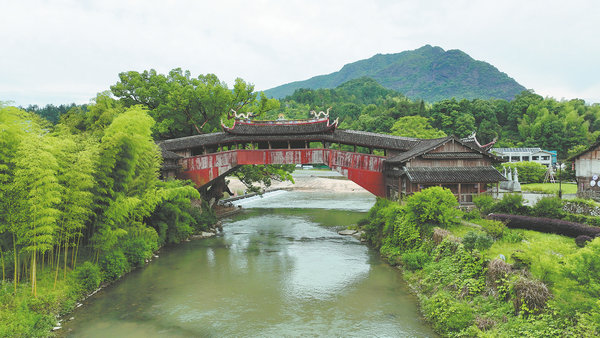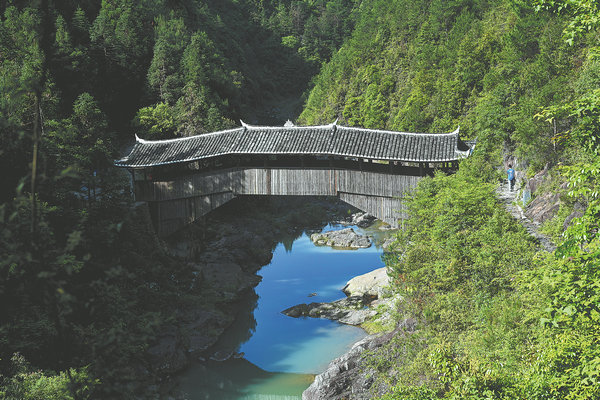

Protective efforts
Born in Taishun county in Wenzhou, Zhejiang, in 1977, Zhong never thought of wooden arch bridges as special — they were something he saw every day as an adolescent.
It was only as he pursued a bachelor's degree in Chinese language at Chengdu's Southwest Minzu University in Sichuan province in 2000 that he discovered their value. He was shocked to find that something he'd taken for granted was actually precious heritage, prey to fire, flood and insects, and that the skills to make them were in danger of becoming lost.
Since then, he has devoted his time to encouraging efforts to protect them.
Zhong says that there are few wooden arch bridges in China, and most are found in the seven mountainous counties in southern Zhejiang and northern Fujian. They use short, interlocking logs to create long arches without nails or rivets, a design that efficiently spreads the load, often without the help of pillars. Originally, the skills to make them would be passed down within families, or through apprenticeship.
Besides carrying traffic, they were social hubs where people gathered to chat, relax, or make religious offerings.
In 2000, Zhong launched a website about the bridges, drawing the attention of fans. A few years later, he held photo exhibitions in universities in Zhejiang and Shanghai to promote them further.

In 2003, he heard of plans for a hydroelectric power station upstream of the Santiao Bridge, which would cut the flow under the Tang Dynasty (618-907) bridge. Worried that the lack of water would render the bridge useless, causing it to fall into obscurity, he issued a call to action on his website.
With public efforts, the power station builders made a concession on the flow to allow the bridge to continue to fulfill its ancient duty.
"Decades later, this is still vivid in my heart. Saving the bridge gave us experience and confidence, and raised awareness of the need to preserve them," he says.